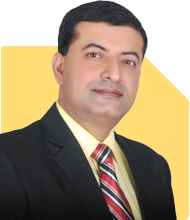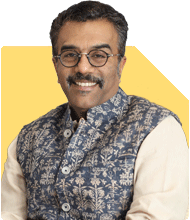Shekhar Kumar |139 Answers |Ask -Follow
Leadership, HR Expert - Answered on May 09, 2024
He has also mentored middle and senior management professionals for leadership positions and guided them in career development.
Shekhar has a bachelor's degree in business management from Magadh University, Bihar, and a master's degree in human resource management from Annamalai University, Tamil Nadu.... more

What is the future of manufacturing industry in India in coming years
However, to fully realize its potential, the Indian manufacturing industry must address certain challenges, including infrastructure bottlenecks, regulatory complexities, skill shortages, and the need for greater ease of doing business. Additionally, there is a growing emphasis on sustainability and environmental responsibility, which manufacturers need to integrate into their operations to remain competitive in the long term.
Overall, with the right policy support, investments in infrastructure and technology, and concerted efforts to address challenges, the manufacturing industry in India is poised for significant growth in the coming years.
You may like to see similar questions and answers below
Desh Deepak | Answer |Ask -Follow
Answered on Jan 16, 2009
Samraat Jadhav |1746 Answers |Ask -Follow
Stock Market Expert - Answered on Jan 31, 2024
Chocko Valliappa |237 Answers |Ask -Follow
Tech Entrepreneur, Educationist - Answered on Nov 15, 2023
Samraat Jadhav |1746 Answers |Ask -Follow
Stock Market Expert - Answered on Dec 26, 2023
Samraat Jadhav |1746 Answers |Ask -Follow
Stock Market Expert - Answered on Feb 22, 2024
Ramalingam Kalirajan |2746 Answers |Ask -Follow
Mutual Funds, Financial Planning Expert - Answered on May 20, 2024
Ramalingam Kalirajan |2746 Answers |Ask -Follow
Mutual Funds, Financial Planning Expert - Answered on May 20, 2024
Ramalingam Kalirajan |2746 Answers |Ask -Follow
Mutual Funds, Financial Planning Expert - Answered on May 20, 2024
Ramalingam Kalirajan |2746 Answers |Ask -Follow
Mutual Funds, Financial Planning Expert - Answered on May 20, 2024
Ramalingam Kalirajan |2746 Answers |Ask -Follow
Mutual Funds, Financial Planning Expert - Answered on May 20, 2024
Ramalingam Kalirajan |2746 Answers |Ask -Follow
Mutual Funds, Financial Planning Expert - Answered on May 20, 2024
Ramalingam Kalirajan |2746 Answers |Ask -Follow
Mutual Funds, Financial Planning Expert - Answered on May 20, 2024
Ramalingam Kalirajan |2746 Answers |Ask -Follow
Mutual Funds, Financial Planning Expert - Answered on May 20, 2024
Ramalingam Kalirajan |2746 Answers |Ask -Follow
Mutual Funds, Financial Planning Expert - Answered on May 20, 2024
Ramalingam Kalirajan |2746 Answers |Ask -Follow
Mutual Funds, Financial Planning Expert - Answered on May 20, 2024























